Power splitter full power splitter, English name Power divider, is a device that divides the energy of one input signal into two or more outputs of equal or unequal energy, and can also synthesize the energy of multiple signals into one output. It can also be called a combiner. A certain degree of isolation should be ensured between the output ports of a power splitter. The splitter is usually divided into one-two (one input and two output), one-third (one input, three output), etc. according to the output. The main technical parameters of the power splitter are power loss (including insertion loss, distribution loss and reflection loss), voltage standing wave ratio of each port, isolation between power distribution ports, amplitude balance, phase balance, power capacity and frequency band. Width, etc.
1. Power splitters are divided into two major categories:
(1) Passive power splitter, its main features are: stable operation, simple structure, basically no noise; and its main disadvantage is that the access loss is too large.
(2) The active power splitter consists of an amplifier. Its main features are: gain, high isolation, and its main disadvantages are noise, relatively complicated structure, and relatively poor operational stability. The output of the power splitter has two power points, three power points, four power points, six power points, eight power points, and twelve power points.
2. The following analysis and comparison of several common microstrip power splitters:
1), microstrip branch line directional coupler
The structure of the microstrip branching directional coupler is shown in Fig. 1. It consists of two parallel conduction bands, which are coupled by two branch conduction bands. The length of the branch conduction band and the interval are one quarter of the wavelength. . Ideally, the port 1 input has no reflection, the input power is output by 2 and 3 ports, and the port 4 has no output, that is, the ports 1 and 4 are isolated from each other. From the odd-even mode analysis method in microwave theory, it can be calculated that for the case of power averaging, the characteristic impedance of the branch conduction band is the same as the input and output lines, and the characteristic impedance of the parallel conduction band is 1/ of the input and output lines, and S12 and S13 have The phase difference of π/2. The microstrip branch line bridge is mainly used as a microstrip balanced mixer. Since ports 1 and 4 are isolated from each other, the local oscillator and the signal do not affect each other. At the same time, the planar characteristics of the microstrip line, the mixing crystal is easily connected to the port. The circuit structure is simple and compact.
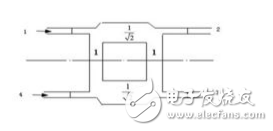
Figure 1 Microstrip branch line directional coupler
2), Wilkinson splitter
The structure of the Wilkinson splitter is shown in Figure 2. The characteristic impedances of the input and output lines are both. For the case of power averaging, the branch line characteristic impedance between the input and output ports = the line length is a quarter line wavelength, and a resistor R is connected across the end of the branch line, and its value is 2. It can be proved by the microwave theory that when the 2 and 3 ports are connected to the load, the input of the 1 port has no reflection, and vice versa for the 2 and 3 ports. The power input by port 1 is equally divided to ports 2 and 3, and the 2 and 3 ports are isolated from each other.
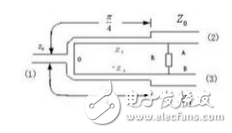
Figure 2 Wilkinson power splitter
3), two-line splitter
The structure of the two-wire binary is shown in Figure 3. Its structure is very simple, and it can flexibly adjust the characteristic impedance of the branch line according to a given input impedance to achieve a good match, so it is obtained in the feed network design of the antenna. Widely used, but its disadvantage is that there is no good isolation between the outputs.
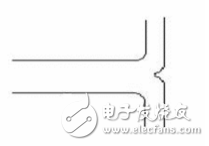
Figure 3 double line splitter
Compare the performance of the above several power dividers as follows:

The power splitter is a three-port network structure. As shown, the phase shift between the output ports is zero. This three-port device is reversible and can be applied both in power distribution and in power synthesis. The input power of the signal input terminal is P1, and the output power of the other two output terminals is P2 and P3, respectively. Theoretically, P1=P2+P3 is known by the law of conservation of energy.
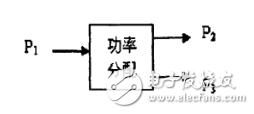
If P2 = P3 and the relationship between the three-port network power is expressed in milliwatts decibels (dBm), it can be written as: P2 (dBm) = P3 (dBm) = Pin (dBm) - 3dB. Of course, P2 does not have to be equal to P3, but the case of equality is most often used in actual circuits. Therefore, the power splitter can be roughly divided into equal parts (P2=P3) and proportional type.  Two types. The design principle is described as follows: The following figure is a schematic diagram of the microstrip three-port splitter, which is developed on the basis of the microstrip T-joint, and its structure is relatively simple. The signal is input by port "1" (the characteristic impedance of the connected transmission line is Z0), and the characteristic impedance is Z02. The two-branch microstrip line of Z03 is output from port "2", "3", and the load resistance is R2, R3. There is no coupling between the two branches, and the electrical length at each center frequency is θ=pi/2.
Two types. The design principle is described as follows: The following figure is a schematic diagram of the microstrip three-port splitter, which is developed on the basis of the microstrip T-joint, and its structure is relatively simple. The signal is input by port "1" (the characteristic impedance of the connected transmission line is Z0), and the characteristic impedance is Z02. The two-branch microstrip line of Z03 is output from port "2", "3", and the load resistance is R2, R3. There is no coupling between the two branches, and the electrical length at each center frequency is θ=pi/2.
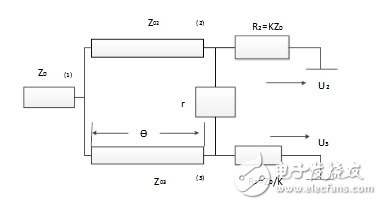
The power splitter should meet the following conditions:
The output power ratio of port 1 "2" to port "3" can be any specified value;
2 Input port "1" has no reflection;
The output voltage of port 3 "2" and port "3" is equal and in phase.
From these conditions, the values ​​of Z02, Z03 and R2, R3 can be determined.
Due to port "2", the relationship between the output power of "3" and the output voltage is:
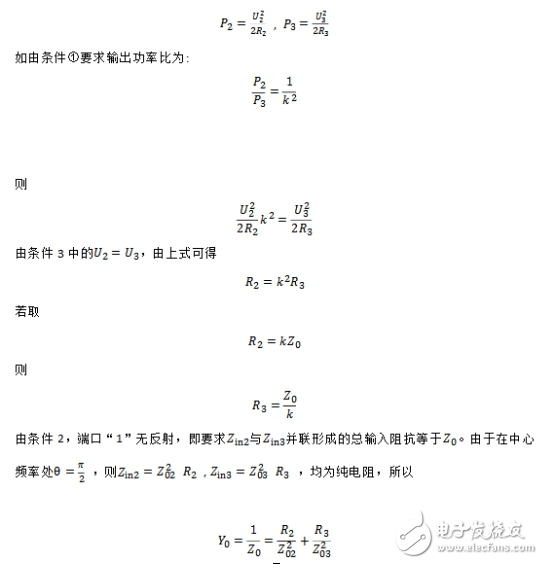
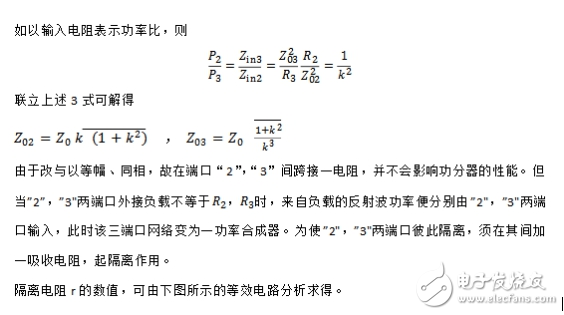
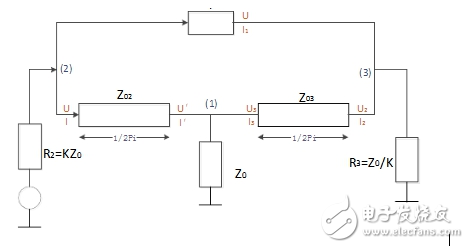
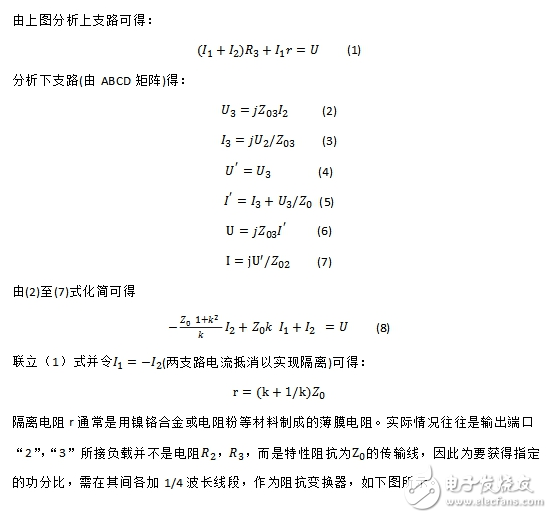
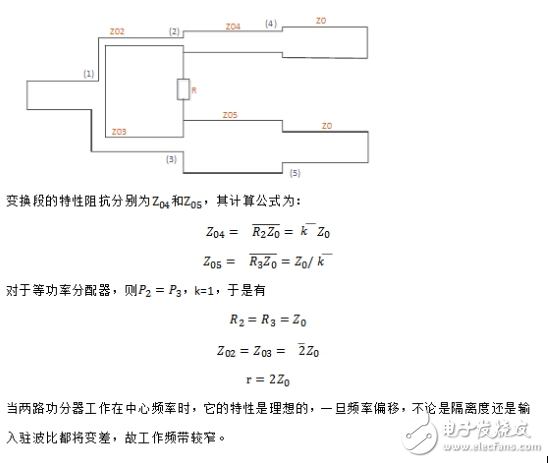
Ningbo Xingchuangzhi Electric Appliance Co.,Ltd. , https://www.xingchuangzhi.com
